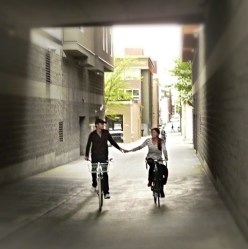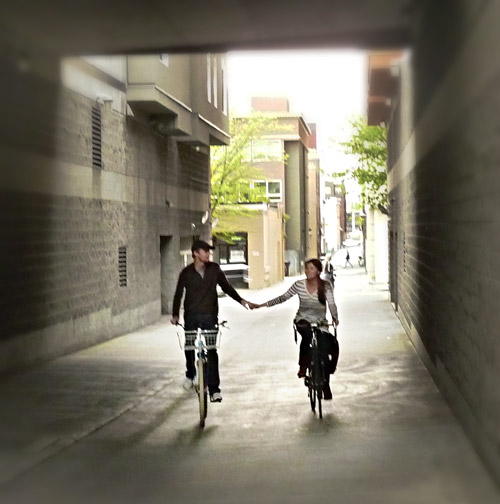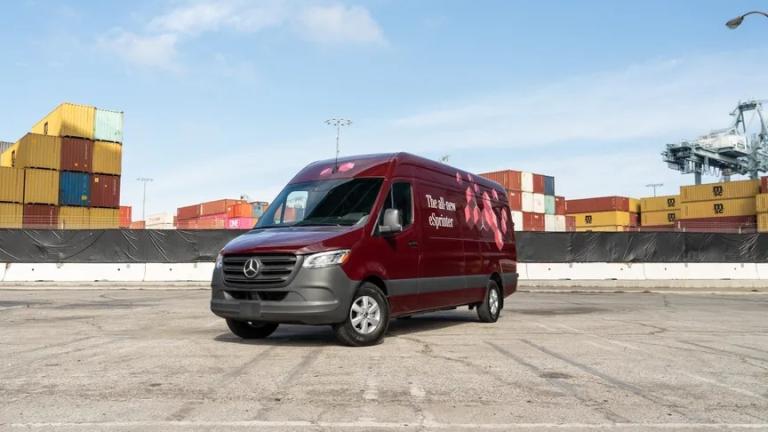
Photo by Shannon Donegan.
A version of this story originally appeared on Sightline.
I fell in love with cycling during six months I spent traveling the world’s great bicycle cities. The ease, safety, convenience … (dreamy sigh)
But as my trip came to an end, I began to realize the reason for my infatuation: Residents of cities like those in Denmark and Holland inject cycling with fun, whimsy, and even romance.
Certainly, many Americans love their bikes, but even more of us would if we learned these five lessons on cycling’s soft side from the world’s active-transport capitals.
1. Human powered travel is romantic. Throughout my travels, I saw all kinds of romance on the cycle tracks — teenagers kissing at stoplights in Paris, older couples holding hands while pedaling in Amsterdam, and a post-wedding getaway bicycle in Copenhagen.
I live in Seattle, and I bike home from work with my boyfriend almost every evening. It’s one of the best parts of my day. We talk about what we see along the way or what smells are coming from the Hostess Cake Factory. When it’s sunny, we sometimes stop for a beer. When it’s a crisp winter night, we watch the ships pass under the Fremont Bridge. When it’s raining, we talk about what kind of soup we want to make for dinner. Biking together through the elements bonds us in a way that would never happen if we were strapped into a car.
The average U.S. worker now spends about 48 minutes commuting each day. Despite the billions of hours we collectively spend commuting, we don’t often talk about the way our transportation choices make us feel — physically or mentally. Maybe we should.
2. You don’t have to be a “cyclist” to ride a bike. Recreational subcultures have owned cycling in North America for a long time. That’s starting to change and it’s an important cultural shift. “None of these people consider themselves cyclists,” Andreas Hammershøj from the Danish Cycling Embassy explained to me last June as we stood on a sidewalk watching swarms of Copenhageners pedal across the Dronning Louises bridge, as 10,000-30,000 do daily. “These are just people getting to work, school, or the grocery store.”
There are Americans who, like Copenhageners, would like to get from A to B on their bikes but don’t ever want to ride a century. (They might not even care to know what a century ride is.) That’s fine. You don’t have to identify with the recreational side of cycling to use a bike for transportation. Just ask Blake Trask, the statewide policy director of the Bicycle Alliance of Washington: “I’m not much of a cyclist,” he says. “I just ride my bike to work most days.”
3. You don’t need a racing bike. Henry Cutler, the Dutch-American owner of WorkCycles in Amsterdam, is convinced that urban cycling will explode once Americans get off high-performance bikes and onto bikes that are upright, comfortable, and utilitarian. “Americans ride bikes that are like race cars; Dutch bikes are like Honda Civics and mini-vans,” Cutler joked last July as I admired his fleet of practical bikes. They come outfitted with child seats, baskets, bells, chain guards, and front and rear lights powered by your pedaling. Oh, and kickstands: Why don’t bikes have kickstands anymore?
Tom Fuculoro, author of the Seattle Bike Blog, got it right when he wrote recently that buying a bike ought to be more like buying a car: “Most people aren’t fascinated by the technical aspects of car engines; they’re sold by the sunroof or cup-holders.”
David Schmidt, owner of The Dutch Bike Shop in Seattle reports that the useful bike trend is gaining steam. “Ninety percent of our clients haven’t ridden a bike since they were kids. They’re rediscovering cycling because it’s fun and simpler than driving,” he says. “These aren’t the crusader commuters. They’re just people who want to start biking to the grocery store.”
4. Biking is healthy — and cheap. Most people reading this article are sitting in front of a computer. More and more of us are “knowledge workers” who sit in front of computers for much of our careers. If you also choose to use passive forms of transportation such as driving or taking the bus, doctors recommend that you compensate for your sedentary lifestyle by “working out.”
Unfortunately, I didn’t find much time in my schedule to compensate — and I wasn’t alone. The Center for Disease Control reports that 80 percent [PDF] of Americans fail to meet federal guidelines for physical activity despite the $19 billion we shell out for gym memberships each year.
Why can’t activity just be engineered into our daily lives so that we can stay healthy without the added chore of working out? Cycling has been the solution for me. I typically burn about 500 calories a day pedaling myself to the places I need to go, and going to the gym is never on the to-do list anymore. Having one less chore means I have more free time to spend with the people I love.
5. Women love biking. Studies have shown that women are more risk averse than men, but once they’re sold on cycling, they enjoy multiple benefits.
A study done in London showed that 73 percent of London residents who participated in on-road cycling training programs were women. The same study interviewed female cyclists and found that “cycling helps bolster a self-confident, independent identity” for many women.
Why else is it important to get more women riding? American women make more major household decisions than men and can hence influence the entire family to get out of the car and on to bikes. Some people also assert that more women cycling can contribute to a more visually pleasing urban environment.
Whether I’m in Seattle or Copenhagen, I always find that cycling helps me experience and engage with the urban environment in new and meaningful ways. Before I started cycling, I often wondered why bike advocates were so passionate about helping others discover cycling. Now I realize, they were just trying to spread the love.



